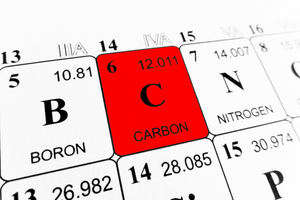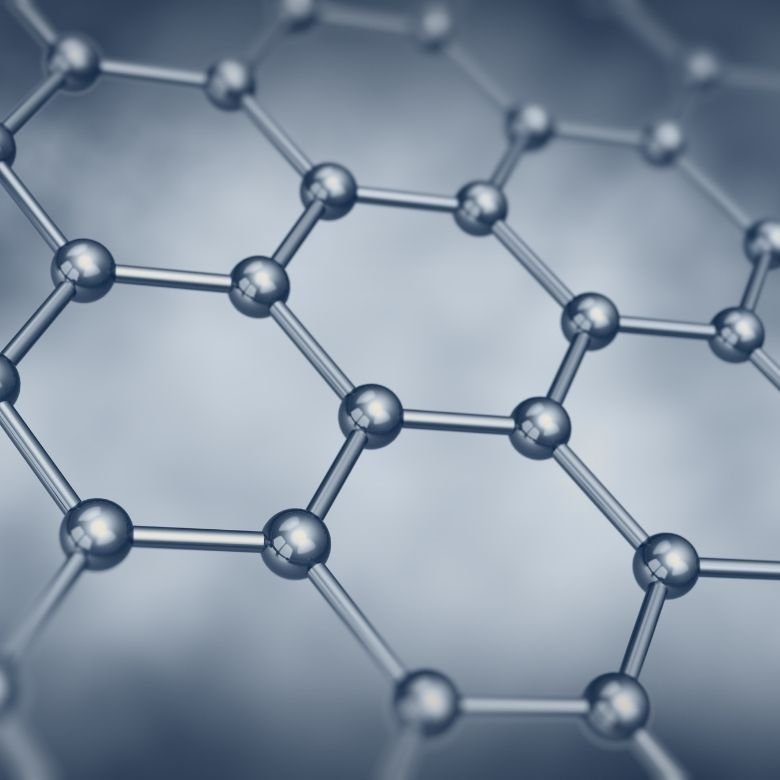New allotropic varieties of carbon are being discovered with each passing decade. Today, their hypothetical number is already estimated at around 500. There is no other such versatile element in the world.

Brief characteristics of carbon
Carbon (C) is an element classified as a non-metal with atomic number 6. This means that it has six protons in the nucleus and the same number of electrons in the non-ionised form. Although it is relatively rare in the Earth’s crust, it forms more compounds than any other element. It is a key element of all living organisms; it builds the structure of proteins, carbohydrates and fats. It is present in the atmosphere as carbon dioxide (CO2), which is one of the phases of the carbon cycle in nature.
What are the allotropic carbon varieties?
The structure composed of carbon atoms can take many physical forms. This phenomenon is referred to as allotropic carbon varieties.
Allotropy is a phenomenon that affects a large number of metals and non-metals. It occurs when different varieties of a given element are present in the same physical state, and they have different chemical and physical properties. They may have a crystalline or molecular structure and differ in the number of atoms in the molecule.
The best-known allotropic carbon varieties occurring in nature are graphite and diamond, extremely different in colour, structure and softness. In addition, scientists managed to create dozens of further varieties under laboratory conditions.

Graphite – a versatile mineral
It is no coincidence that the graphite usually associated with a pencil is a soft, grey-black mineral, greasy and dirty to the touch. It is also an excellent conductor of electricity and heat, it is insoluble in water and has lubricating properties. It occurs in two types of structures: hexagonal and trigonal, and its atoms are linked together in a network of parallel planes.
Just like the others carbon allotropes, graphite is resistant to high temperatures. It is used for the production of electrodes and crucibles, fireproof vessels and refractory bricks. In addition, it is used in the production of lubricants, anti-corrosive paints and polishing agents.
Graphite occurs in nature in metamorphic rocks such as graphite schist and crystalline schist. Nowadays, its largest producer is China. For commercial purposes, graphite is obtained by the pyrolysis of anthracite in a nitrogen atmosphere.
Diamond – the most precious gemstone
It is hard to find two more different carbon allotropes than diamond and graphite. The diamond is the hardest mineral in the world, rated 10 on the 10-point Mohs scale. It occurs as octahedral or hexahedral crystals with high gloss and partial transparency.
The most precious diamonds are colourless, but due to contamination, they can also turn yellow, pink, blue or brown. They do not conduct electricity but are good heat conductors. Although their surface can only be scratched by another diamond, they are relatively fragile.
Natural diamonds occur mainly in primary kimberlite and crumb deposits formed by translocation. The highest quality stones are mainly used in jewellery. After appropriate polishing they are called diamonds and reach dizzying prices on the international market.
Lower quality diamonds and synthetically derived crystals are also an important industrial raw material. Due to their hardness, they are used in the production of blades, drills and abrasives. Diamonds are also used to produce elements of medical and scientific equipment, hardness testers and heat conducting pastes.

Fullerenes, i.e. allotropes of carbon black
In nature, fullerenes can also be found in smaller quantities. They are brown or black translucent solids with a metallic sheen. Their molecules consist of greater amounts of carbon atoms – from 28 to even 1,500.
These relatively recently discovered allotropic carbon varieties consist of many different structures. Spherical C60 particles forming crystals, also known as “buckyball”, are considered the most durable. In addition, fullerenes can also take a multilayer form (the so-called nanobubbles) or cylindrical (the so-called nanotubes).
Fullerenes have low chemical activity and are insoluble in water. They have semiconductor and superconducting properties. As a result, they are widely used in the electronics, optical, biomedical and nanotechnology industries. Their antioxidant and pharmacological potential deserves particular attention. Due to their structure and biocompatibility, they can act as drug carriers.
Fullerenes are mainly obtained from carbon black. For this purpose, a number of solvents are used that enable the separation of specific types of molecules. Alternatively, they can be obtained from another carbon allotrope – graphite bombarded with a laser beam in a vacuum.
Graphene – two-dimensional carbon
One of the latest discovered carbon allotropes is graphene. It is a flat structure made of single carbon atoms arranged in the shape of honeycombs. As it is one atom thick, it is conventionally considered a two-dimensional material.
Graphene is an excellent conductor of heat and electricity. Its greatest advantages also include transparency and extremely high electron flow velocity – even higher than in silicon. Moreover, graphene is extremely hard and resistant to stretching.
These properties mean that graphene can replace silicon in the electronics industry. Its current and future applications include the production of high-speed transistors, rollable touchscreen displays and photovoltaic modules with batteries for energy storage. Similarly to other carbon allotropes, graphene can be used as a carrier for medicines, raw material for tissue engineering, and even as an agent in oncological therapy.
Graphene can be obtained in many different ways. Nowadays, the most widely used are chemical vapour deposition (CVD) and the thermal decomposition of silicon carbide. The original method of detaching the layer of carbon atoms with the use of adhesive tape is also sometimes used for laboratory purposes.

Cyclocarbon
An even newer allotropic carbon variety than graphene is called cyclocarbon. It forms a ring made of 18 carbon atoms. There are alternating single and triple bonds between them.
Like graphene, cyclocarbon is only one atom thick. However, the first estimates show that it is a semiconductor. Its other properties remain unknown.
According to the scientists, it will be possible to create cyclocarbons with different numbers of atoms in the ring. Their potential uses include the miniaturisation of electronic devices.
Other allotropic carbon varieties
Carbon, despite its commonness, remains one of the most fascinating elements. Research is still being carried out to make better use of its properties. Allotropic varieties of carbon seem particularly promising in this respect.
An interesting polymer, so far remaining in the sphere of hypothetical considerations, is carbyne. This name refers to a chain made of carbon atoms with a potential strength 40 times greater than that of a diamond. However, this material is so unstable that so far, it has been produced only inside the nanotube.
Another promising allotropic variety of carbon is the so-called Q-carbon. It has a three-dimensional structure in which carbon atoms form three ligands. Its likely applications include improving energy storage in lithium batteries.
In addition, we also know the carbon nano-foam, a porous crystalline structure with magnetic properties. Carbon black is also a specific amorphous allotropic variety of carbon.
The future will show how these and other unique carbon structures will be used. There is an abundance of the element in the world, so the development of technology should not threaten the stability of resources or the natural environment. In fact, there is a good chance that allotropic varieties of carbon will help to better manage energy and improve many industrial processes.